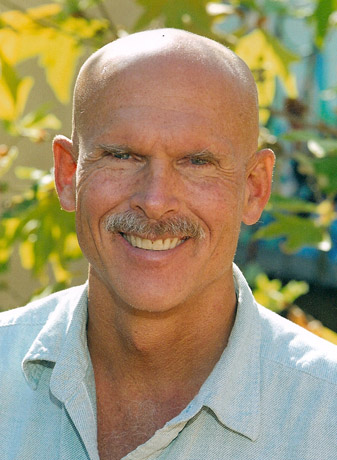William Lauritzen, M.S.
William Lauritzen, M.S. is Lecturer at Xiamen University and author of The Invention of God: The Natural Origins of Mythology and Religion.
Sir Arthur C. Clarke, inventor of the communications satellite called Bill “some kind of genius”. Harry Kroto, Nobel Prize winner, invited him to present his ideas at the first international conference on the buckminsterfullerene molecule.
Bill is a distinguished graduate of the Air Force Academy in Colorado Springs. His first two years at the Academy, besides the extensive military and physical training, he studied algebra and trigonometry, analytic geometry, calculus, engineering, law, astronomy, philosophy, ethics, comparative religion, astrodynamics, electrical engineering, chemistry, aeronautical engineering, psychology, anthropology, history, Russian, US history, world history, military history, air power and 20th century warfare, statistics, mechanics, biology, human physiology, political science, physics, space flight, economics, and art.
His second two years at the Academy he earned a B.S. in psychology by studying general psychology, leadership, physiological psychology, statistics, social psychology, abnormal psychology, experimental psychology, personality, testing and measurements, learning, systems of psychology, industrial psychology, perception, and engineering psychology. He also studied philosophy, ethics, the great religions, the philosophy of science, and the philosophy of the counter-culture. He graduated near the top 1% of his class and was named “The Outstanding Graduate” in both psychology and philosophy.
The Air Force then sent him to an accelerated program to get a master’s degree in industrial and organizational psychology at Purdue. At the age of 22, he earned a master’s degree in Industrial Psychology from Purdue, specializing in Human Engineering Design. He was assigned to design and evaluate cockpits for jet aircraft, which he did for two years.
He was then discharged from the Air Force as a pacifist. However, like Einstein, he found pacifism to be impractical.
From 1980–1982 Bill independently studied organizations, job morale, and industrial productivity.
He then taught extensively in the inner city of Los Angeles, as a substitute teacher, while studying independently studying education, mathematics, science, and psychology.
Bill wrote a paper on the Buckminsterfullerence molecule in 1994. This paper resulted in him being invited to a conference where he met Harry Kroto and Richard Smalley, the two discoverers of the molecule, and who two years later shared the Nobel Prize for this.
He has created several innovative designs and insightful articles which combine cognitive science, mathematics, geometry, geodesic domes, archeology, anthropology, geology, oceanography, education, ancient Egypt, economics, and other subjects.
His designs include a new way of presenting and teaching the English alphabet (still under development), a new number system (a base-12 color-coded number system with new symbols), an educational word game (still under development), and Spacehenge.
Bill has been influenced in his thought and designs by Socrates, Plato, Galileo, Darwin, Freud, Buckminster Fuller, Albert Einstein, Frank Lloyd Wright, Alfred Korzybski, and others.
In 2004, he taught mathematics at Otis Art College. From 2001 to 2005 he taught psychology part-time at Los Angeles City College. He currently teaches at Xiamen University in China.
His articles include Versatile Numbers: Self-Organization, Emergence and Economics, Nature’s Numbers, Geodesic Dome Education: An Introduction, The Math Debate: To Drill It or To Explore It?, SpeakEasy Math: Part I, Closest-Packing or Gravitational Gathering of Spheres, SpaceHenge™, Mass Delusions in Astronomy: The “Sunset” and “Solstice”, Seeing a Round Earth: The Moon Illusion Explained, Buckminsterfullerene Triangulated, Useable Knowledge — Part I: What is Knowledge?, and Steven Hawking: “That Guy in the Wheelchair”. Read the full list of his articles!
Watch Numbers of The Future? “Alien Numbers”, Science at Venice Beach, Introduction to the Paleo Diet, The Home Star, The Invention of God: Secrets About Religion Part 1 and Part 2. and Science Essentials Part 1, Part 2, and Part 3. Visit his Facebook page. Visit his site Earth360.com and read his blog. Read his LinkedIn profile. Follow his X feed.
